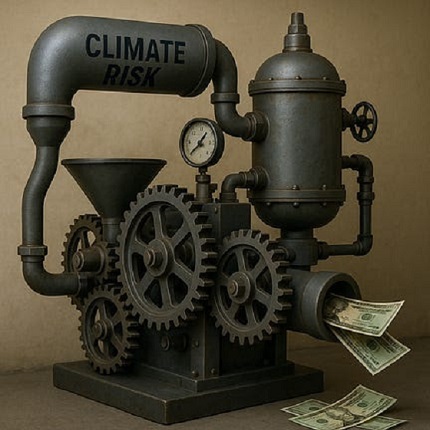Uncategorized
Monster typhoon slams into northeastern Philippines

TUGUEGARAO, Philippines — Typhoon Mangkhut slammed into the country’s northeastern coast early Saturday, with witnesses saying the storm’s ferocious wind and blinding rain ripped off tin roof sheets and knocked out power at the start of the onslaught.
The typhoon made landfall before dawn in the coastal town of Baggao in Cagayan province on the northern tip of Luzon island, an agricultural region of flood-prone rice plains and mountain provinces often hit by landslides.
More than 5 million people are at risk from the storm, which the Hawaii-based Joint Typhoon Warning Center categorizes as a super typhoon with powerful winds and gusts equivalent to a category 5 Atlantic hurricane.
There were no immediate reports of major damages or casualties in the region, where a massive evacuation from high-risk areas has been underway for the last two days.
Associated Press journalists in a hotel in Cagayan’s capital city of Tuguegarao saw tin roof sheets and other debris hurtle through the air and store signs crash to the ground. Cars shook as gusts pummeled a parking lot.
With a huge raincloud band 900
Mangkhut was tracked late Friday about 190
Even if the typhoon weakens slightly after slamming ashore, its winds will remain very destructive, government forecaster Rene Paciente said.
“It can lift cars, you can’t stand, you can’t even crawl against that wind,” Paciente told reporters late Friday in Manila.
In Cagayan’s capital city of Tuguegarao, residents braced for the typhoon’s fury by reinforcing homes and buildings and stocking up on food.
“It was busy earlier in the hardware store and people were buying wood, nails, tin wire, plywood and umbrellas,” said Benjamin Banez, who owns a three-story hotel where workers were busy hammering up wooden boards to protect glass panels.
A super typhoon wrought heavy damage to Banez’s hotel and the rest of Cagayan in 2016. “We’re praying that there will be less damage this time, although we know that this one will be very strong,” Banez said.
Ninia Grace Abedes abandoned her bamboo hut and hauled her four children to a school building serving as an emergency shelter. The 33-year-old laundrywoman said the 2016 typhoon blew away their hut, which they abandoned before the storm hit.
“If we didn’t, all of us would be dead,” Abedes said.
More than 15,300 people had been evacuated in northern provinces by Friday afternoon, the Office of Civil
Concerns over massive storm surges that could be whipped inland by the typhoon’s winds prompted wardens to move 143 detainees from a jail in Cagayan’s Aparri town to nearby towns, officials said.
The typhoon hit at the start of the rice and corn harvesting season in Cagayan, a major agricultural producer, prompting farmers to scramble to save what they could of their crops, Cagayan Gov. Manuel Mamba said. The threat to agriculture comes as the Philippines tries to cope with rice shortages.
After the Philippines, the Hong Kong Observatory predicts Mangkhut will plow into the Chinese mainland early Monday south of Hong Kong and north of the island province of Hainan. Though it is likely to weaken from a super typhoon to a severe typhoon, it will still be packing sustained winds of 175 kph (109 mph), it said.
The observatory warned of rough seas and frequent heavy squalls, urging residents of the densely populated financial hub to “take suitable precautions and pay close attention to the latest information” on the storm.
The gambling enclave of Macau, near Hong Kong, suffered catastrophic flooding during Typhoon Hato last August that left 10 dead and led to accusations of corruption and incompetence at its meteorological office.
On the Chinese mainland, the three southern provinces of Guangdong, Guangxi and Hainan are
Guangdong, China’s manufacturing hub, has set up 3,777 shelters, while more than 100,000 residents and tourists have been moved to safety or sent home. The province has recalled more than 36,000 fishing boats to port, while train services between the cities of Zhanjiang and Maoming have been suspended and all ferry services between Guangdong and Hainan have been put on hold. Fujian province to the north of Guangdong is also closing beaches and tourist sites, the agency reported.
Philippine forecasters said the shifting typhoon could possibly blow toward Vietnam after it exits late Saturday or early Sunday.
In an emergency meeting Thursday, President Rodrigo Duterte asked Cabinet officials from the north to help oversee disaster-response work and told reporters it was too early to consider seeking foreign aid.
“It would depend on the severity of the crisis,” Duterte said. “If it flattens everything, maybe we need to have some help.”
Mangkhut, the Thai word for mangosteen fruit, is the 15th storm this year to batter the Philippines, which is hit by about 20 a year and is considered one of the world’s most disaster-prone countries.
Typhoon Haiyan left more than 7,300 people dead or missing, flattened entire villages, swept several ships inland and displaced over 5 million in the central Philippines in 2013.
___
Associated Press writers Jim Gomez in Manila, Philippines, and Christopher Bodeen in Beijing contributed to this report.
Aaron Favila And Joeal Calupitan, The Associated Press
Uncategorized
Cost of bureaucracy balloons 80 per cent in 10 years: Public Accounts

The cost of the bureaucracy increased by $6 billion last year, according to newly released numbers in Public Accounts disclosures. The Canadian Taxpayers Federation is calling on Prime Minister Mark Carney to immediately shrink the bureaucracy.
“The Public Accounts show the cost of the federal bureaucracy is out of control,” said Franco Terrazzano, CTF Federal Director. “Tinkering around the edges won’t cut it, Carney needs to take urgent action to shrink the bloated federal bureaucracy.”
The federal bureaucracy cost taxpayers $71.4 billion in 2024-25, according to the Public Accounts. The cost of the federal bureaucracy increased by $6 billion, or more than nine per cent, over the last year.
The federal bureaucracy cost taxpayers $39.6 billion in 2015-16, according to the Public Accounts. That means the cost of the federal bureaucracy increased 80 per cent over the last 10 years. The government added 99,000 extra bureaucrats between 2015-16 and 2024-25.
Half of Canadians say federal services have gotten worse since 2016, despite the massive increase in the federal bureaucracy, according to a Leger poll.
Not only has the size of the bureaucracy increased, the cost of consultants, contractors and outsourcing has increased as well. The government spent $23.1 billion on “professional and special services” last year, according to the Public Accounts. That’s an 11 per cent increase over the previous year. The government’s spending on professional and special services more than doubled since 2015-16.
“Taxpayers should not be paying way more for in-house government bureaucrats and way more for outside help,” Terrazzano said. “Mere promises to find minor savings in the federal bureaucracy won’t fix Canada’s finances.
“Taxpayers need Carney to take urgent action and significantly cut the number of bureaucrats now.”
Table: Cost of bureaucracy and professional and special services, Public Accounts
| Year | Bureaucracy | Professional and special services |
|
$71,369,677,000 |
$23,145,218,000 |
|
|
$65,326,643,000 |
$20,771,477,000 |
|
|
$56,467,851,000 |
$18,591,373,000 |
|
|
$60,676,243,000 |
$17,511,078,000 |
|
|
$52,984,272,000 |
$14,720,455,000 |
|
|
$46,349,166,000 |
$13,334,341,000 |
|
|
$46,131,628,000 |
$12,940,395,000 |
|
|
$45,262,821,000 |
$12,950,619,000 |
|
|
$38,909,594,000 |
$11,910,257,000 |
|
|
$39,616,656,000 |
$11,082,974,000 |
Uncategorized
Trump Admin Establishing Council To Make Buildings Beautiful Again


From the Daily Caller News Foundation
By Jason Hopkins
The Trump administration is creating a first-of-its-kind task force aimed at ushering in a new “Golden Age” of beautiful infrastructure across the U.S.
The Department of Transportation (DOT) will announce the establishment of the Beautifying Transportation Infrastructure Council (BTIC) on Thursday, the Daily Caller News Foundation exclusively learned. The BTIC seeks to advise Transportation Secretary Sean Duffy on design and policy ideas for key infrastructure projects, including highways, bridges and transit hubs.
“What happened to our country’s proud tradition of building great, big, beautiful things?” Duffy said in a statement shared with the DCNF. “It’s time the design for America’s latest infrastructure projects reflects our nation’s strength, pride, and promise.”
“We’re engaging the best and brightest minds in architectural design and engineering to make beautiful structures that move you and bring about a new Golden Age of Transportation,” Duffy continued.
Mini scoop – here is the DOT’s rollout of its Beautifying Transportation Infrastructure Council, which will be tasked with making our buildings beautiful again. pic.twitter.com/
9iV2xSxdJM — Jason Hopkins (@jasonhopkinsdc) October 23, 2025
The DOT is encouraging nominations of the country’s best architects, urban planners, artists and others to serve on the council, according to the department. While ensuring that efficiency and safety remain a top priority, the BTIC will provide guidance on projects that “enhance” public areas and develop aesthetic performance metrics.
The new council aligns with an executive order signed by President Donald Trump in August 2025 regarding infrastructure. The “Making Federal Architecture Beautiful Again” order calls for federal public buildings in the country to “respect regional architectural heritage” and aims to prevent federal construction projects from using modernist and brutalist architecture styles, instead returning to a classical style.
“The Founders, in line with great societies before them, attached great importance to Federal civic architecture,” Trump’s order stated. “They wanted America’s public buildings to inspire the American people and encourage civic virtue.”
“President George Washington and Secretary of State Thomas Jefferson consciously modeled the most important buildings in Washington, D.C., on the classical architecture of ancient Athens and Rome,” the order continued. “Because of their proven ability to meet these requirements, classical and traditional architecture are preferred modes of architectural design.”
The DOT invested millions in major infrastructure projects since Trump’s return to the White House. Duffy announced in August a $43 million transformation initiative of the New York Penn Station in New York City and in September unveiledmajor progress in the rehabilitation and modernization of Washington Union Station in Washington, D.C.
The BTIC will comprise up to 11 members who will serve two-year terms, with the chance to be reappointed, according to the DOT. The task force will meet biannually. The deadline for nominations will end Nov. 21.
-

 Alberta2 days ago
Alberta2 days agoThe Recall Trap: 21 Alberta MLA’s face recall petitions
-

 illegal immigration2 days ago
illegal immigration2 days agoUS Notes 2.5 million illegals out and counting
-

 International2 days ago
International2 days agoTyler Robinson shows no remorse in first court appearance for Kirk assassination
-

 Daily Caller1 day ago
Daily Caller1 day ago‘There Will Be Very Serious Retaliation’: Two American Servicemen, Interpreter Killed In Syrian Attack
-

 Energy2 days ago
Energy2 days agoCanada’s future prosperity runs through the northwest coast
-

 Business22 hours ago
Business22 hours agoInflation Reduction Act, Green New Deal Causing America’s Energy Crisis
-

 Automotive1 day ago
Automotive1 day agoPoliticians should be honest about environmental pros and cons of electric vehicles
-

 Crime16 hours ago
Crime16 hours agoTerror in Australia: 12 killed after gunmen open fire on Hanukkah celebration










